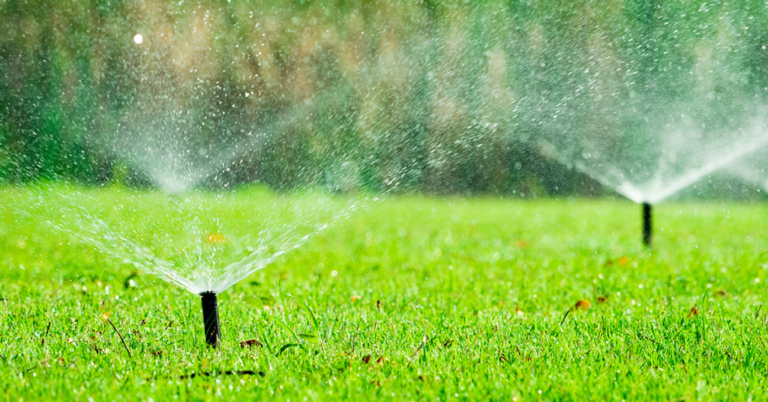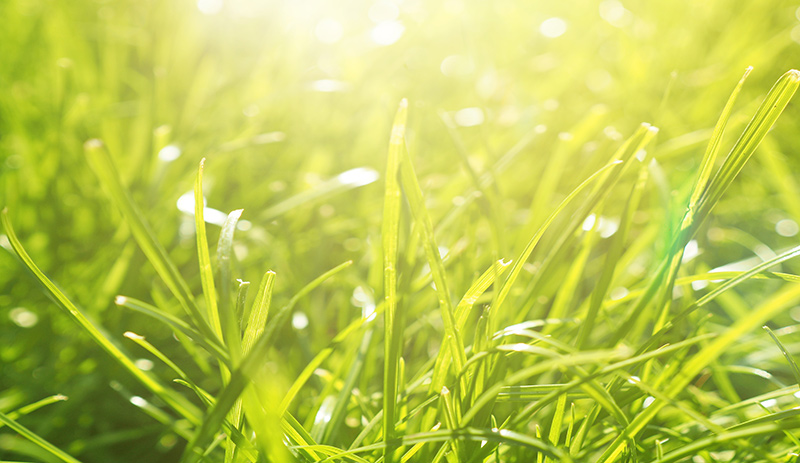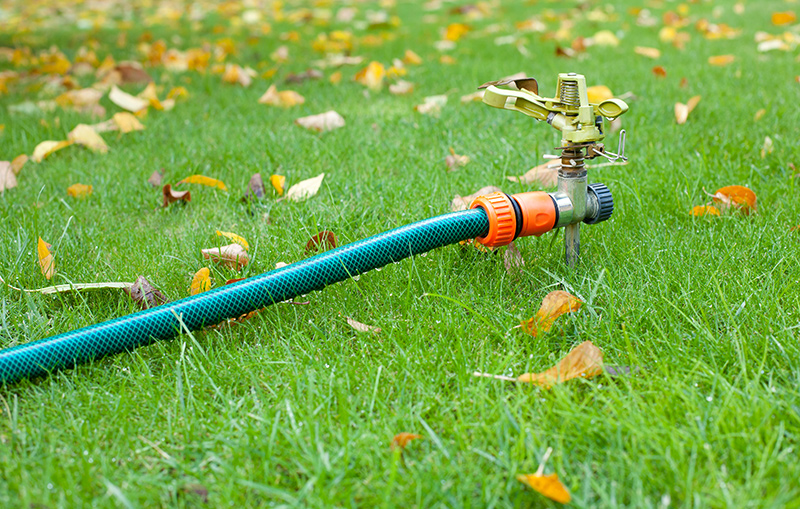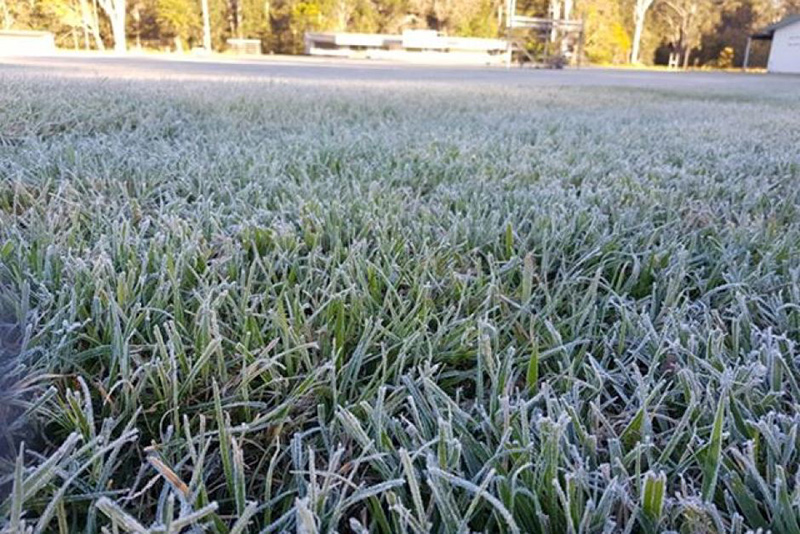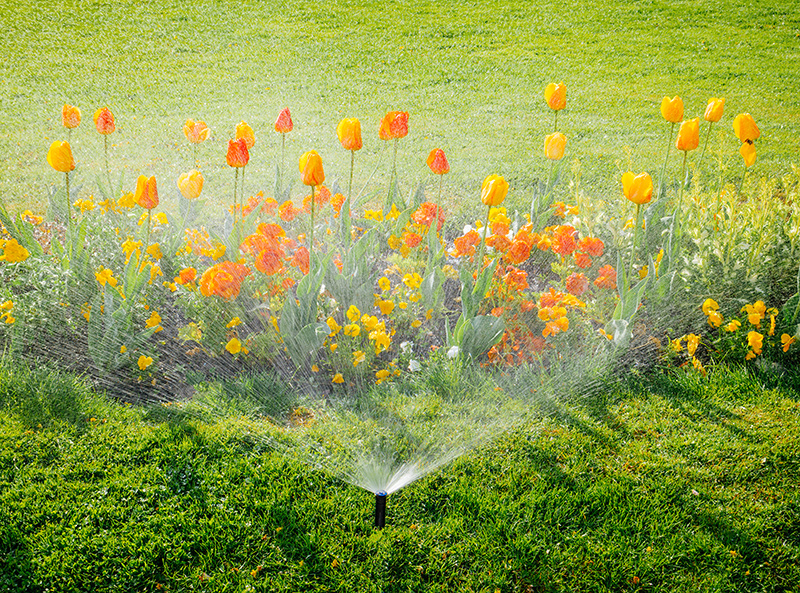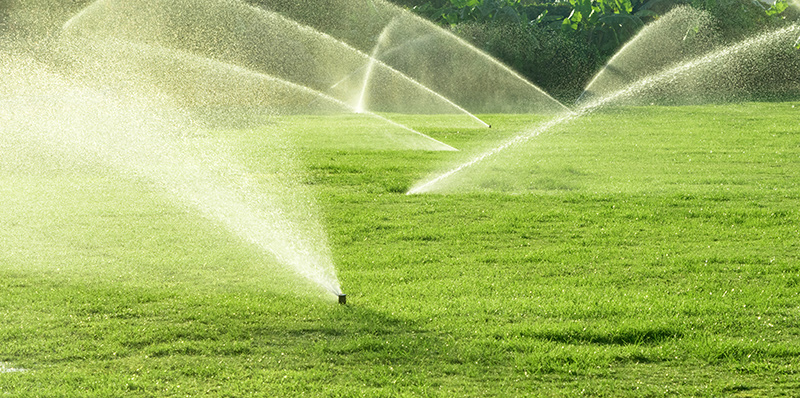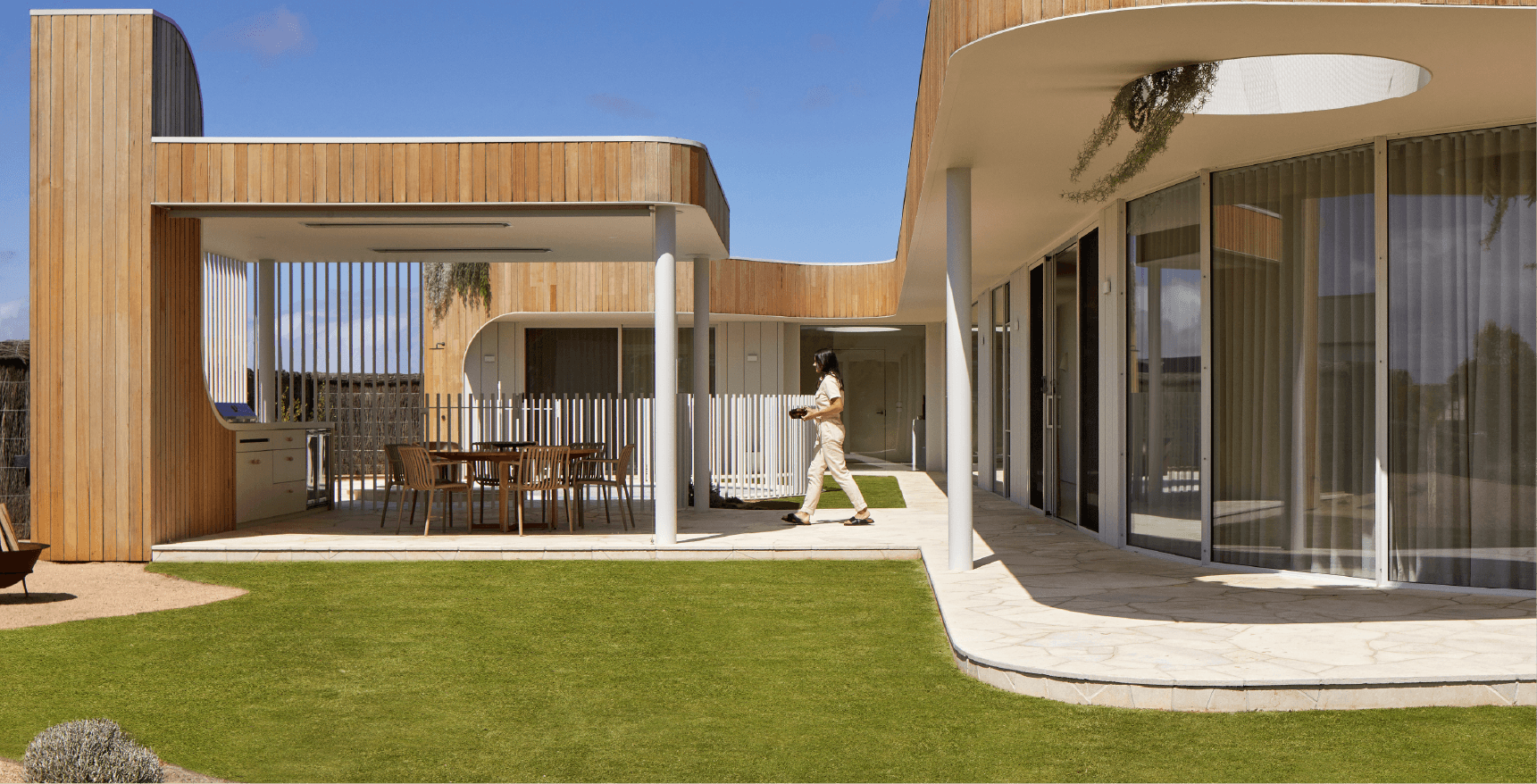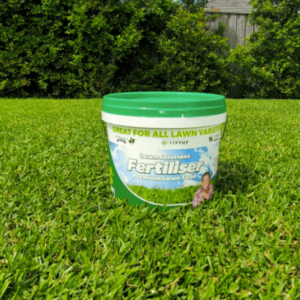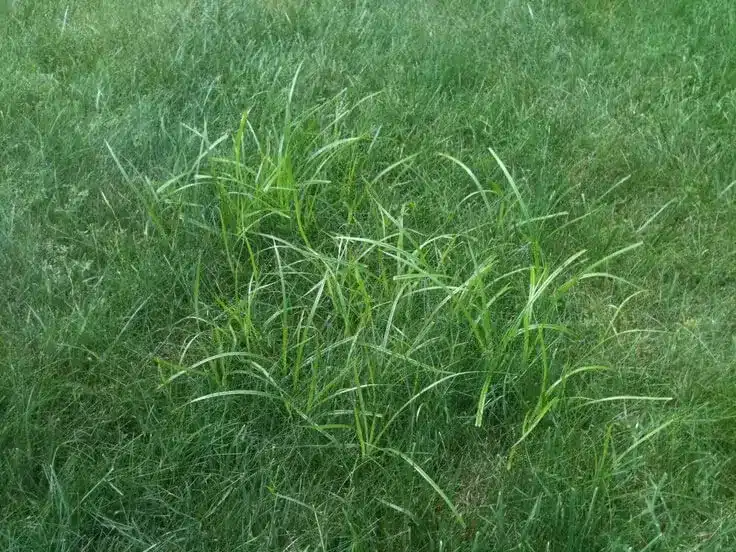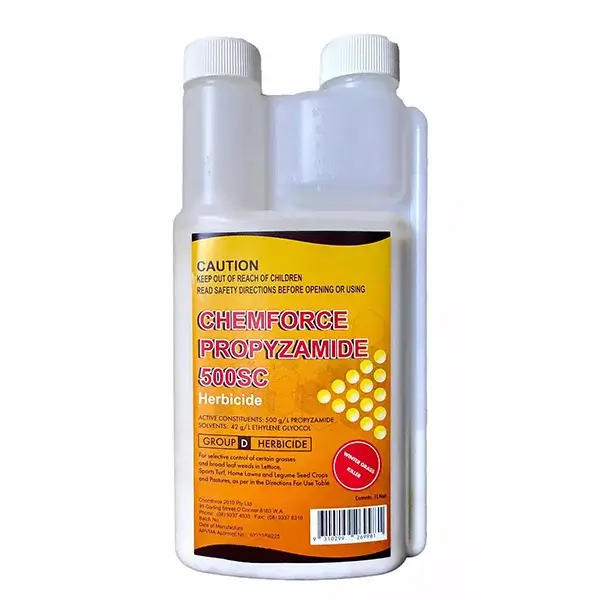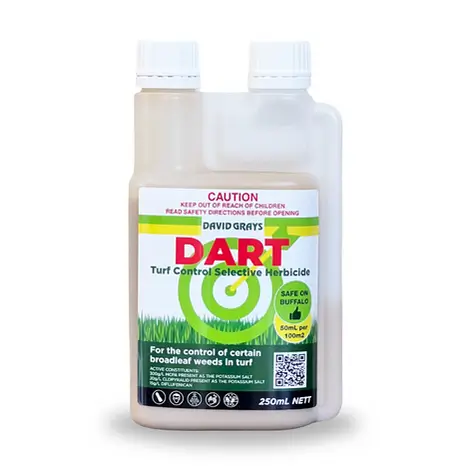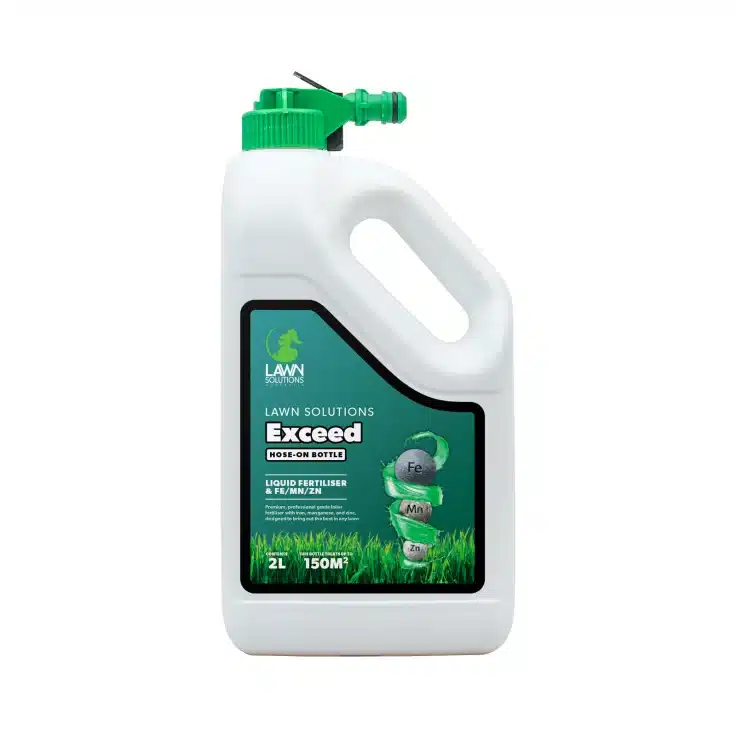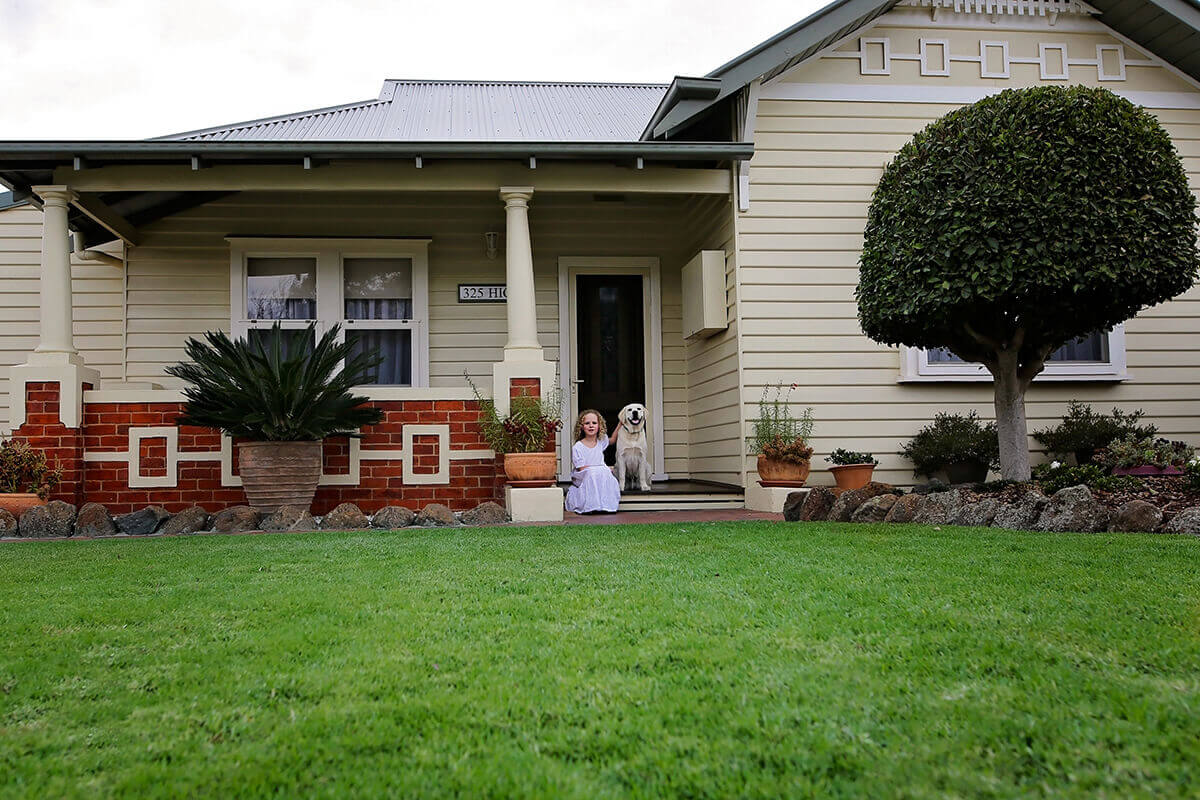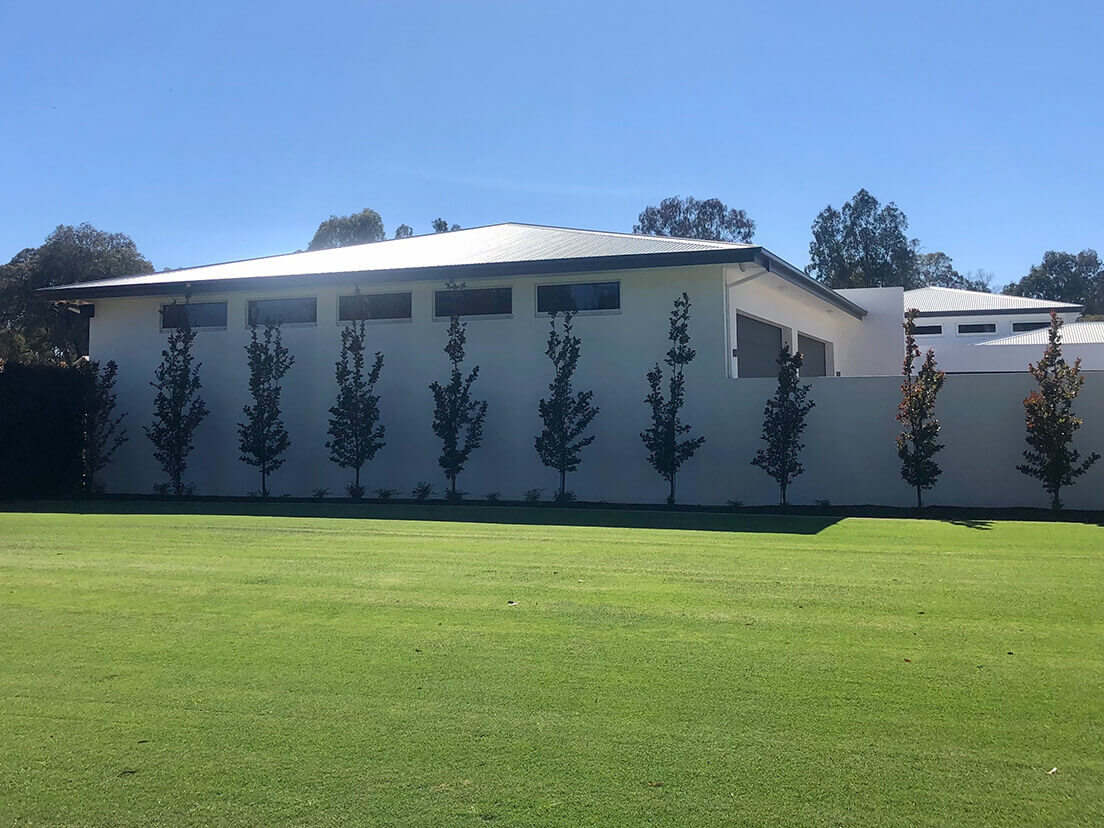That perfectly manicured, new lawn look can be yours to keep all year round. With regular watering and basic lawn care, you can create the perfect garden lawn no matter the season!
Instant turf can be laid out at any time of the year, so depending on when you install your new lawn you may have to reduce or increase the frequency of which you water it while it is establishing. In summer months, when soil temperatures are higher, new turf lawns will establish quicker, but will need to be watered more intensely, but for a shorter period of time until it roots in. In winter, your lawn will need very little watering while it is establishing, but it will need to be nurtured through a longer establishment period until it takes root - so smaller volumes of water will be required, over a longer period of time - which also means it will be longer before you can run, jump and play on it with your kids or pets!
Here, at Coolabah Turf, we provide instant turf varieties that are resilient to the seasonal changes of the Australian climate. However, like all lawn types, some gentle-loving TLC is needed to ensure negative effects of dormancy is minimised during the cooler winter months and strong lawn health is retained during the hottest summer months.But remember - the appearance of any lawn is only ever as good as it is managed! And adequate or inadequate watering is one of the main factors which will influence how your lawn will perform, regardless of what Mother Nature throws at it.
To help you, we have established a seasonal guide to watering instant turf. This guide will provide important tips and tricks for maintaining your lawn throughout the year, and to keep it healthy and looking great and to help ensure you always have the best looking lawn in the street!
Summer watering tips
Watering your lawn in summer could pose some challenges if you do not have an automated irrigation system. The harsh Australian sun can leave our lawns bone dry, leading to dried out or dead grass. One of the biggest dilemmas Australian lawn lovers face is how to keep our backyard lawns luscious and green during summer when things like water restrictions and drought events with low rainfall occur.
Coolabah Turf specialise in the exclusive supply of drought-tolerant turfgrass varieties which are extremely hardy and can survive our country’s long hot summer months. These varieties need very little water to thrive, even in the harshest heat - making them an environmentally conscious and low maintenance lawn choice. However, there are ways you can further maximise the appearance and vitality of your lawn over summer. Despite developing turfgrass varieties which have extremely low water requirements, it is still recommended to protect your long term landscape investment that people buying and installing a new lawn turf install an automated irrigation system to ensure efficient watering habits.
Lawn conditions during Summer
Most common lawn types in Australia can survive extended periods of time without water. They will lose colour and become brown & dry but will regain their appearance and bounce back after irrigation or rainfall reoccurs. This is because unirrigated grass surfaces in summer will enter a period of dormancy where they shut down tissue growth to preserve moisture loss. Signs that your lawn is becoming dormant during summer include:
- Grass has become brown, dry and wilted or bare
- The crown at the base of the leaves is white to off-white in colour
- Grass shows signs of regeneration after sufficient irrigation (usually within 3-4 weeks)
Once established, turfgrasses with some level of drought tolerance will not die when the turf plant reaches its permanent wilting point. When the period of drought ends, and it either rains or you start to irrigate the area, the turf is able to regenerate.However, keep in mind the ability to self repair and recover from extended periods of little or no irrigation is only possible once a lawn is fully established. It’s important to not let newly laid instant turf go without irrigation while still establishing, especially during the warmer summer months. With limited root systems and drier soil, the grass may not survive extended periods of drought and will wither and die. In this instance,your new lawn will need frequent watering until it is fully established.
How often should I water instant turf in Summer?
It depends! It depends mostly on what your expectations are of your lawn area. What do you want to use it for? A lawn’s growth rate is directly related to how much you water and fertilise it, and ultimately how much wear and tear you expect it to sustain. If you have a lawn where you are constantly playing backyard sports with busy kids or big dogs - then it will need greater irrigation inputs than an area that is simply a feature lawn area designed for little or no foot traffic. It also depends on how much direct sun or shade your lawn area gets. Obviously lawns located in full sun environments will dry out quicker than areas protected by some shade, usually cast from the eve of a home on its south facing side, an established tree, or a neighboring fence. Expect to mow a well maintained lawn roughly once every 7-10 days during the summer months if it is being frequently irrigated through this peak growing season.
If you have an established, drought-tolerant lawn variety, and you are really wanting a turf ground cover that you don't have to mow very often, and are happy for it to just survive and keep weeds and dust at bay, then water requirements could often be met through natural rainfall or existing soil moisture storage, so minimal irrigation will be required. Grass in Australia can be incredibly hardy, adapting to the harsher climates. For example, lawns in Victoria entered an extended period of zero rainfall prior to the drought-breaking rains in 2010. This is because grass has an in-built survival mechanism, allowing it to survive by relying on water stored deep within the soil.
If however, you want a thriving, healthy luscious lawn around your home, you want to develop a habit of weekly watering during the warmer months, or sometimes twice weekly during peak summer periods (usually those long hot February days when the kids have just gone back to school!). To help train your lawn to learn to live with less water, it is more effective to apply water less frequently, but for a longer period of time. So instead of irrigating your lawn every day for 10 minutes, it will be more effective to water it once or twice a week during summer for 40-60 minutes at a time.
So, the simple answer to how often you should water your lawns during summer is - it depends!
In short, to ensure we are all working to preserve our state’s precious water resources, we recommend you always only ever water an established, warm season, drought tolerant turf variety on ‘’an as-needed basis only” depending on:
- Your expectations of your lawn’s purpose and performance
- Amount of foot traffic
- How much you want to mow it
- How much shade it gets
- How much natural rainfall has occurred
- Soil type (lawns grown on sandy solid will require more irrigation than a loam soil base)
If you are establishing a new lawn during summer, you will need to water it thoroughly, two or three times a day until its roots penetrate deeply enough into the soil base to source its own water supply and become self-sufficient in its irrigation uptake. Turf will dry out and shrink up and leave gaps between the freshly laid turf slabs if you fail to irrigate adequately during the establishment period.
Quick tips to keep your lawn green during Summer
- Make sure you install a watersmart, drought-tolerant turfgrass variety
- Use an automated irrigation system to take the guesswork out of watering your lawn
- Remove dead material/thatch from lawn to allow plants to absorb all the available moisture
- Aerate soil to improve soil moisture levels
- Minimise foot traffic
- Water for longer, but less frequently
- Apply a quality NPK fertiliser to help it cope with or recover from heavy foot traffic
Autumn watering tips
During the autumn months of March, April and May, your lawn may need lighter and less frequent watering. As the temperature begins to drop, now is the time to focus on reviving and repairing your lawn. Summer may have left your lawn lacking in density and colour, so now is a good time to repair those brown patches or even lay down new instant turf.
Lawn conditions during Autumn
The summer months can leave your lawn and soil dry and lacking in nutrients. Diseases can also appear after a long hot summer when the grass becomes stressed from lack of moisture or from patches of compacted or poorly drained soil. Weeds may begin to appear along with pests, and some people may find patches of dead grass that needs to be replaced by instant turf or lawn seed. Autumn leaves will also need to be regularly raked, as you want to let in as much sunlight on your lawn as possible. Remember that all Coolabah Turf varieties need heat to not only survive - but to thrive! They do not enjoy cold temperatures, so the more sunlight you expose it to the better. Autumn lawn care also involves good feeding. Using a fertilizer at the beginning of the season will help provide your lawn with the energy it requires to tolerate shorter daylight hours and less sunlight.
How often should I water instant turf in Autumn?
During Autumn it is best to water your lawn in the mornings, as evening watering can encourage fungus growth due to the cooler, moister temperatures. Watering a lawn which has had an early morning frost settle on it can also help to minimise the effects of frost burn, which can severely in some regions discolour and dry out the leaf blade. As previously recommended, continue to water your lawn on an as needs basis depending on the weather, soil type and performance expectations of your grass. You can check the moisture of the soil by using the “screwdriver test”. Simply push a screwdriver into the soil, and if it doesn’t go easily past three or four inches then you need to increase your irrigation.
Quick tips to keep your lawn healthy during Autumn
- Use fertiliser to prepare for winter. We recommend applying Oxafert.
- Get rid of weeds and leaves
- Aerate your soil
- Water only when needed
- Repair damaged lawn by laying instant turf or lawn seed
Winter watering tips
Wet, frosty conditions can take its toll on lawns. As winter creeps in, there are fewer daylight hours and an increase in shade and moisture. Most lawns will become dormant during the winter season, with soil retaining moisture. This means that watering your established lawn in winter isn’t necessary. In most Australian states, winter rainfall will be adequate to sustain the growth of your lawn during this time. As our grass enters hibernation mode during winter, it’s the time to further promote its greenness by mowing and watering less and by using winter grass treatments to keep it looking nice.
Lawn conditions during Winter
While the colder winter months means your lawn will require less water, you still need to keep an eye on it to prevent common lawn conditions such as excess water and fungal diseases. As most Australian turf varieties are warm season grasses, growth during winter will begin to slow down. Winter dormancy is a common characteristic of C4 warm season varieties, and this often results in some colour loss. The appearance of any turf located in an east-facing or exposed position will often suffer more than turf located in protected areas. Winter weeds will often arise but will disappear once warmer weather returns. In this case, we recommend hand-weeding where possible. Aside from this, your lawn will require no maintenance during its winter dormancy but can benefit from winter fertilising and using a colour guard to retain vibrancy. And try and keep traffic to a minimum while lawns are inactive and dormant - especially dormant lawns that are in shade.
How often should I water instant turf in Winter?
One of the most common questions we receive at Coolabah Turf is should I be watering my lawn during winter?
Essentially, winter rainfall is enough to keep your lawn sufficiently watered. However, for those in warmer parts of Australia, you may need to water your lawn once a month - particularly if it has been a dry winter. If you do choose to water your lawn in winter, we always recommend less (once a month) and longer (up to 40 minutes) watering to help train your lawn to become drought tolerant.
One way to test whether your lawn needs water during winter is by walking on it. If there’s a noticeable footprint left which takes some time to bounce back, then your lawn is probably lacking water and will need a good soaking.
Quick tips to keep your lawn looking vibrant during Winter
- Avoid over-watering. This could lead to waterlogging and fungal diseases.
- Control winter weeds by hand-weeding
- Apply a round of winter fertiliser in the first weeks of July and August to prepare for spring. We recommend using Seasol to increase your lawn’s resistance to winter frost and fungal infections.
- Apply ColourGuard during the first week of winter to retain the colour of your lawn
Spring watering tips
The winter months have likely caused your warm season lawns to suffer. Spring brings a welcome respite from the shortened daylight and wetter temperatures and is the perfect time to revive your lawn with some simple lawn care tasks. Just as you would spring clean your home, you can spring clean your lawns by increasing lawn maintenance to help further promote its growth and vibrancy. Water is key to the health of your lawn over the warmer months. But during spring, your lawn may still have a lot of water retention from winter so it’s best to water only as needed to avoid drowning your grass. Springtime is also the right time to begin mowing your lawn when it needs it and to apply lawn fertiliser to keep it picnic-ready.
Lawn conditions during Spring
The weather is warming up and your warm season grass is thankful for it! You will notice after many months of zero growth, that your lawn is starting to come back to life. This is usually only after soil temperatures start to shift up to around 12-13 degree mark.Have the best looking lawn on the street by preparing your turf. After winter, you may find that weeds have appeared, and soil has been compacted by the moist winter months prior. This is the time to get rid of weeds (hand weed or apply a selective herbicide to target a specific type of weed) and aerate your soil to increase water and oxygen uptake of your lawn. Springtime is also the perfect time to fertilise to help your lawn recover from the visual effects of winter decline. Using a good quality NPK fertiliser will speed up new growth and help to establish stronger roots for summer. The quality of your lawn will depend on the amount of TLC you give it! And while all Coolabah Turf lawns require low-water, low-fertiliser regimes, they still benefit from applications of these nutrients.
How often should I water instant turf in Spring?
In the first few weeks of spring, soil and air temperatures can sometimes continue to remain quite cool. Therefore, you’ll only need to apply minimal additional top-up watering over and above any naturally occurring spring rainfall. A deep soaking once a week is usually sufficient, depending on your location and climate. To check if your lawn needs watering, burrow your finger into the soil. If it’s damp, then you don’t need to add water.
Quick tips to keep your lawn perfect during Spring
- Water as needed - avoid overwatering
- Aerate soil to alleviate soil compaction and to encourage lawn growth
- Apply Lawn Solutions Fertiliser - Premium Lawn Food at the start of spring to improve colour and growth of your lawn
- Begin mowing as your lawn requires it
- Remove weeds by hand or with selective herbicide
Irrigation tips for watering your lawn
It’s important that we give our lawns the water it needs to grow but in an environmentally responsible way. With drought conditions and the continuing uncertainty of water restrictions around Australia, we recommend installing an independent water supply. Using tank, grey and bore water reserves to irrigate your lawns ensures the longevity of your turf while minimising the demands on local water supplies. We also recommend laying drought-tolerant instant turf, like the ones grown and supplied at Coolabah Turf. These hardy varieties require minimal watering, once established and can survive extended periods of time without water.
Drought conditions and instant turf
Australia’s harsher climate calls for a sturdier grass, able to withstand extended periods of drought and harsh sun. Coolabah Turf specialises in drought-tolerant instant turf varieties which can not only survive but will guarantee to thrive in harsh, hot tough conditions. Instant turf varieties like Sir Walter DNA Certified is a lush, emerald-green grass that will sustain long periods of zero irrigation and will self repair if and when damaged. Drought-resistant grasses are not only easy to install but also:
- Thrive for longer during extended periods of drought and dry conditions
- Self repair and recover quicker following drought conditions
- Require significantly less watering
- Are tough! Varieties like Sir Walter DNA Certified are shade, insect, weed and pet resistant
Instant turf varieties like Sir Walter hardly need any watering once established. However, in sandy locations such as Western Australia,more frequent watering will be required. And it’s a great idea to install a rain tank so that you can give your lawn the irrigation it needs without breaching local watering restrictions during the hotter weather months if and when they come into force in your region.
Have the perfect lawn all year round
The team at Coolabah Turf are available all year round to provide you with expert lawn care advice! No matter the weather, we can help offer a range of lawn solutions, products, or instant turf varieties to help you to achieve your perfect lawn. Contact us today.

